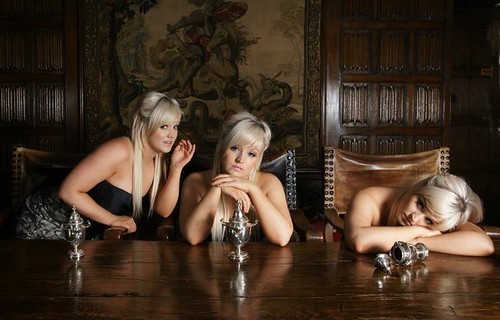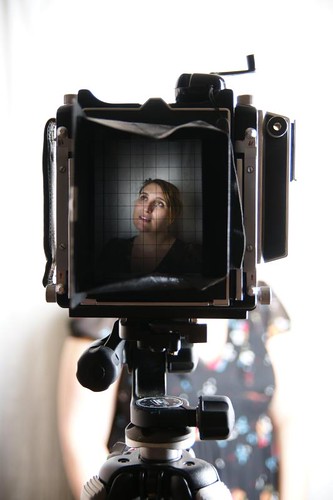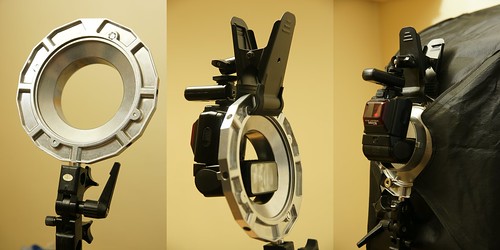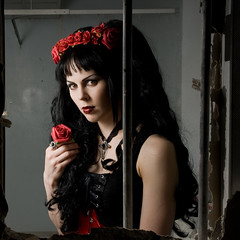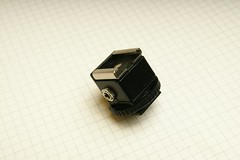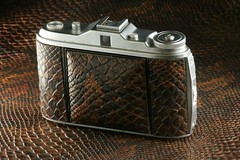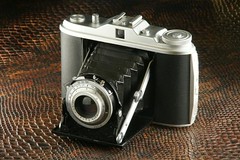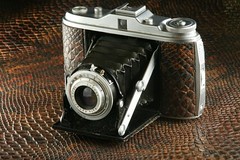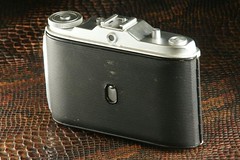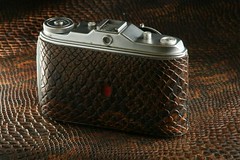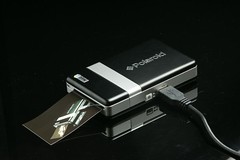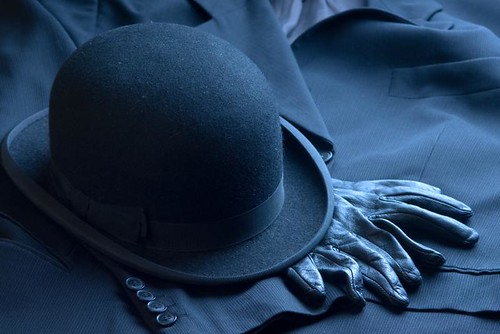
Last weekend, I arranged for London based editorial Photographer,
Tom Miles, to deliver just one more of his excellent seminars from his
tour of UK universities. I had been following the seminars on his blog and feeling extremely jealous of the workshy soap dodgers who were getting this amazing educational opportunity. So I contacted Tom and begged him to do one final workshop for the London Strobist meetup group. Tom agreed and arranged everything for us, even the venue. He used his contacts at
Calumet in Drummond Street to let us use their room for the day.
Tom has an impressive list of clients (Men's Health, Men's Fitness, Runner's World, Golf Monthly, Penguin Books, Hodder Publishing, Maxim etc) he gave us a two hour talk, taking us through some of the images he shot for them, telling us everything about the shoot, from how he got the work through to how he lit the shots. He also gave us a rundown of how he got he got his start in the business and the work he had to put in to make it. One of the things which really stood out for me was the importance of assisting, not just for the technical experience that it gives you, but also for the valuable contacts you can make which will get you the work.
After Tom's talk we were given a choice of 5 assignments and three hours to bring back 4-10 images and an invoice. I have to admit that I let myself down with the assignment. I chickened out of asking strangers to pose for me and went for a subject that I could shoot as a still life. Now if you have ever met me, you might understand that people might be a little worried about being approached by me and I'm used to rejection. But thats no excuse for me not to try, I need to learn how to approach people and put them at their ease and the only way to learn how is to do it. The long and the short of it is, that instead of taking portraits, my forté, I ended up shooting still life, which quite frankly is not. I had these ideas that I would breeze through Camden market and grab some shots of bowler hats in the shops, get home and do some awesome still life shots and then romp back to Calumet and have my images reviewed to critical acclaim. It didn't quite work out that way. I did manage to get a couple of shots in the market on the way but nothing to write home about because I didn't take my time.
Then in my
kitchenstudio I set up some lights and started to shoot macros of the details on my Bowler Hat. Unfortunately Bowler hats don't actually have a lot of details so I started getting a little desperate. The macros would probably have been acceptable, but as Tom pointed out during the critique, the focus wasn't quite in the right places to make the shots work. I should have used a little more depth of field and checked for critical focus. It would have been a good idea to shoot tethered so I could check the focus after each shot. He also suggested I go in much closer and show closeups of the stitching, so I had missed an opportunity to eak more details out of the hat. Of course I was starting to panic a little because the clock was running down. I got my wife to wear the hat for me and took a few natural light shots. Then I pulled out my tatty old suit and used it as a backdrop for the hat. This worked very nicely but it did take me a long time to get a framing and composition that I was happy with. This shot seemed to go down well during the critique but I was told that the set was a bit schizophrenic, they didn't look like they had all been taken by the same photographer. Perhaps if I had started with the wide shot I would have explored the detail of the hat from a better starting position and tied the images together with the same lighting style.
With the clock running down I loaded the images in lightroom, made a selection and started writing them to disk and while that was happening I started thinking about the invoice. I cheated a little because I used the model release forms from Tom's blog as a guide to the type of rights package and I knew from the talk that the fee would be in the hundreds rather than the thousands, I settled for a fee that turned out to be about half of what I should have been charging and stuck on some expenses such as my model's fee and the cost of the hat. I could probably have charged a studio hire fee as well as they weren't to know that I shot the whole thing in my kitchen. Unfortunately despite my lowball pricing Tom and Emma weren't actually going to pay me for my work, it was just an exercise. During the critique session after the assignment the invoice was given as much importance as the photos themselves and it was quite instructive seeing the different ways in which we all got it wrong.
I have to say that I was very impressed with the work turned out by my fellow strobists.
Callum and
Rams in particular turned out a superb product shot of shoes which they shot on top of Callum's car. And everyone put in a creditable effort considering that they had to persuade strangers to let them photograph them. You can see everyone's efforts in a
Sldeshow on Flickr
Following on from the assignment critique, there were individual portfolio critiques by Tom and Emma an agent from
Vue represents. I found the critique very encouraging and though
my portfolio was quite focused, both Tom and Emma suggested the same images for weeding out and made suggestions for the type of images to build in.
It was a great day, not only did I get to go to an awesome seminar, but we raised over £300 for Tom's charity. I would highly recommend having a look at
Tom's blog. It is full of great advice on the business of photography. If you are putting together a portfolio, you must look at Tom's series on portfolios.
